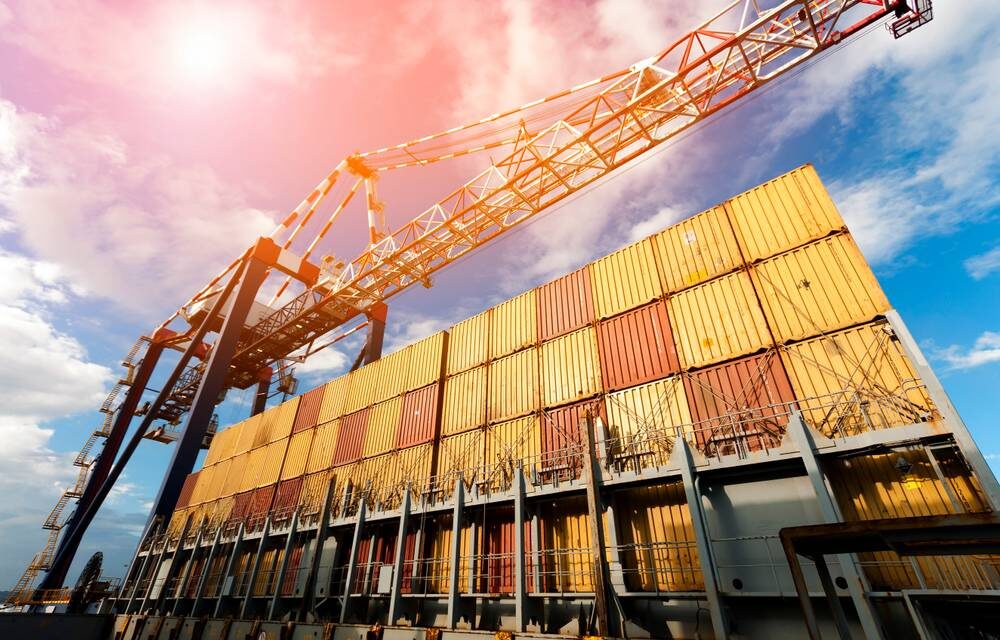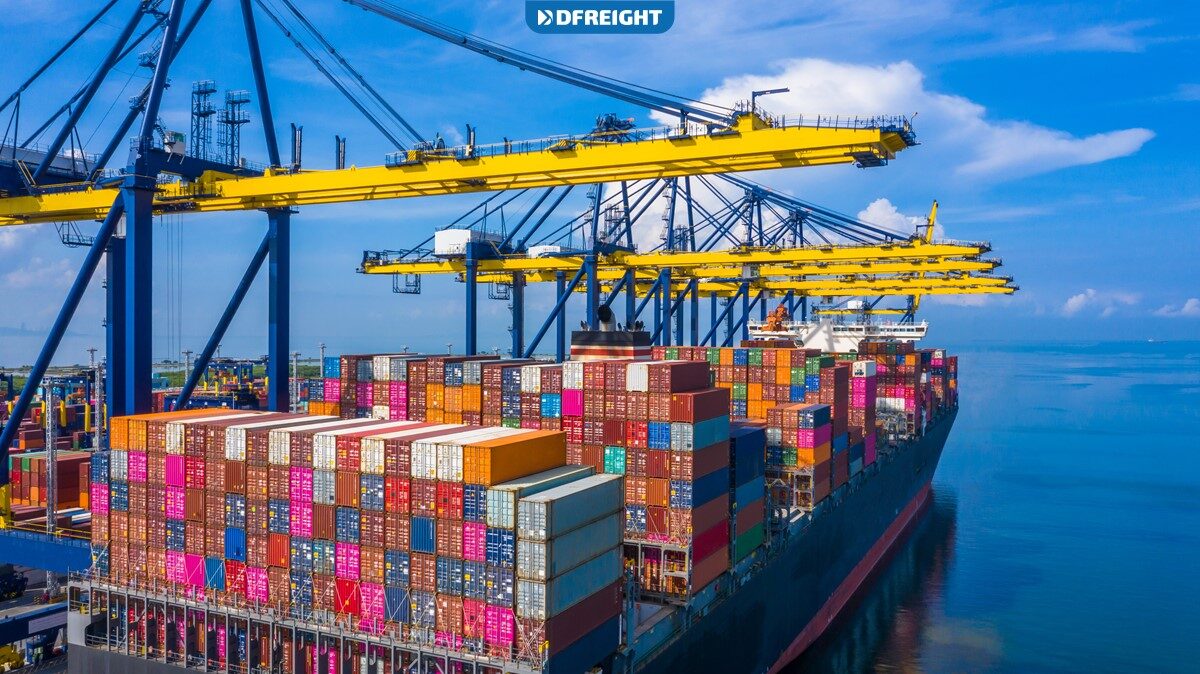Understanding the Role of Transshipment in Global Trade

In the intricate world of international trade, efficiency reigns supreme. Transshipment emerges as a crucial strategy, ensuring seamless movement of goods across vast distances. But what exactly is transshipment, and how does China’s transshipment process benefit importers?
Transshipment refers to the practice of transferring cargo from one mode of transport (ship, plane, truck) to another at an intermediate port or hub before reaching its final destination. This strategic move unlocks a multitude of advantages, particularly for long-haul journeys originating from China, a global manufacturing powerhouse.
Benefits of Utilizing China’s Transshipment Process
China’s robust logistics infrastructure and strategically positioned transshipment hubs offer a treasure trove of benefits for importers:
- Cost Optimization: Transshipment allows for consolidation of cargo from various suppliers in China into a single container at the transshipment hub. This consolidated shipment translates to potentially lower freight rates compared to direct shipping of individual packages.
- Enhanced Flexibility: Importers gain the flexibility to combine shipments from different origins within China and even neighboring countries, maximizing container utilization and potentially reducing overall costs.
- Improved Efficiency: Transshipment hubs often boast advanced infrastructure and streamlined processes, leading to faster cargo handling and potentially shorter delivery times compared to direct routes with limited vessel availability.
- Access to New Markets: By leveraging free trade agreements between China and transshipment hub countries, importers can potentially reduce or eliminate import duties, opening doors to new markets with favorable trade policies.
- Inventory Management: Transshipment hubs often provide storage facilities, enabling importers to stage inventory closer to their final destinations, facilitating timely distribution and improved responsiveness to market demands.
Challenges and Risks of Using China’s Transshipment Process

While undeniably advantageous, transshipment in China is not without its challenges:
- Increased Complexity: Introducing an additional step – the transshipment hub – adds complexity to the supply chain. Careful planning, clear communication with logistics partners, and robust documentation are crucial for a smooth process.
- Potential Delays: Delays can occur at the transshipment hub due to unforeseen circumstances like customs clearance issues or congestion. Importers must factor in these possibilities and build buffer time into their delivery schedules.
- Visibility and Control: With cargo changing hands at the transshipment hub, maintaining real-time visibility and control over the shipment can be challenging. Importers should choose reliable logistics providers with robust tracking systems.
- Hidden Costs: While consolidation can lead to lower freight rates per container, additional charges like handling fees at the transshipment hub can arise. Importers should obtain comprehensive quotes upfront to avoid unexpected costs.
Key Players in China’s Transshipment Process
A successful China transshipment operation hinges on a well-coordinated team:
- Importer: The driving force behind the import process, responsible for selecting the goods, negotiating terms, arranging logistics, and ensuring compliance with regulations.
- Freight Forwarder: Acts as the intermediary between the importer and various logistics providers, managing documentation, customs clearance, and cargo movement.
- Shipping Lines: Ocean carriers responsible for transporting containers between ports, offering various service levels and transit times.
- Transshipment Hub Operator: Manages the facilities at the transshipment hub, handling cargo consolidation, storage (if needed), and onward transportation.
- Customs Authorities: Oversee the import process at both the origin (China) and destination ports, ensuring compliance with import regulations and duty collection.
Steps Involved in the Transshipment Process in China

A well-defined process ensures a smooth China transshipment experience:
- Planning and Sourcing: Importers identify goods, negotiate with suppliers, and finalize purchase orders.
- Booking and Consolidation: Importers or freight forwarders book shipping space and consolidate cargo from different suppliers at a designated warehouse in China.
- Customs Clearance (China): The freight forwarder facilitates customs clearance for export from China, ensuring all necessary documentation is in order.
- Transportation to Transshipment Hub: The consolidated cargo is transported via truck or rail to the chosen transshipment hub in another country.
- Transshipment Hub Operations: At the hub, cargo may be unloaded, inspected by customs, consolidated with other shipments, and reloaded onto a new vessel or mode of transport.
- Onward Transportation: The cargo is transported from the transshipment hub to the final destination port.
- Customs Clearance (Destination): The importer or freight forwarder manages customs clearance procedures at the final destination port, ensuring duty payment and compliance with regulations.
- Delivery and Distribution: Once cleared by customs, the cargo is delivered to the importer’s warehouse or designated distribution center for further processing and onward shipment to final customers.
Best Practices for Importers Using China’s Transshipment Process
To navigate the China transshipment process effectively, importers should prioritize the following:
- Partner Selection: Meticulously select a reputable freight forwarder with expertise in China transshipment. Experience, strong communication skills, and a proven track record are crucial.
- Clear Communication: Maintain open communication with all parties involved – suppliers, freight forwarders, shipping lines, and customs authorities – to ensure smooth information flow and timely identification of potential issues.
- Detailed Documentation: Ensure all documentation – invoices, packing lists, certificates of origin – is accurate, complete, and readily available to avoid delays at customs clearance points.
- Visibility and Tracking: Utilize real-time tracking systems offered by logistics providers to maintain visibility over cargo movement throughout the journey.
- Cost Management: Carefully analyze all potential costs associated with transshipment, including freight rates, handling fees, storage charges (if applicable), and potential duties, to ensure cost-effectiveness.
- Contingency Planning: Develop contingency plans to mitigate potential delays at the transshipment hub or unforeseen circumstances during transportation.
Common Mistakes to Avoid When Utilizing China’s Transshipment Process

Avoiding these common pitfalls can safeguard a smooth and successful China transshipment experience:
- Underestimating Complexity: Failing to appreciate the added complexity of transshipment can lead to logistical hiccups. Careful planning and clear communication are essential.
- Inaccurate Documentation: Incomplete or inaccurate documentation is a recipe for delays at customs clearance, potentially incurring additional costs and disrupting delivery schedules.
- Hidden Cost Oversights: Not factoring in all potential costs associated with transshipment, such as handling fees and storage charges, can lead to budget overruns.
- Lack of Visibility: Inadequate tracking systems leave importers blindsided to potential delays or issues with their cargo, hindering proactive problem-solving.
- Unreliable Partners: Choosing inexperienced or unreliable logistics partners can introduce unnecessary risks and inefficiencies into the process.
Legal and Regulatory Considerations for Importers
Importers using China’s transshipment process must adhere to relevant regulations in both China and the destination country. Key considerations include:
- Import/Export Regulations: Ensure compliance with regulations governing the import of goods from China and the export of goods from the transshipment hub country.
- Customs Duties and Taxes: Research and factor in potential import duties and taxes applicable at both the origin (China) and destination ports.
- Trade Agreements: Leverage free trade agreements between China and the transshipment hub country to potentially reduce or eliminate import duties.
- Prohibited and Restricted Goods: Be aware of any restrictions on the import of specific goods into the destination country.
By understanding the intricacies of China’s transshipment process, its advantages and challenges, and adhering to best practices, importers can unlock significant cost savings, enhance efficiency, and gain access to new markets. With careful planning, meticulous execution, and a focus on building strong partnerships, China’s transshipment process can become a valuable tool for navigating the complexities of global trade.





